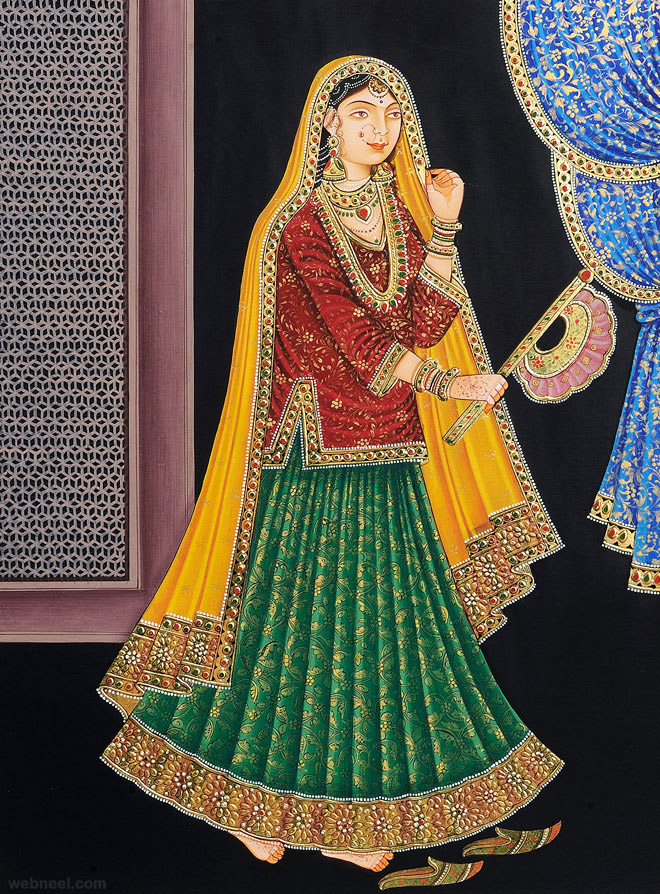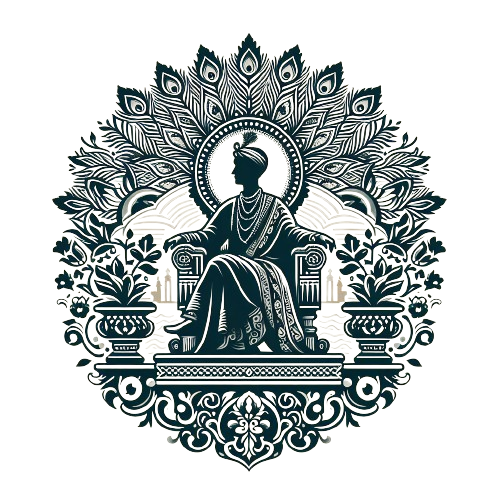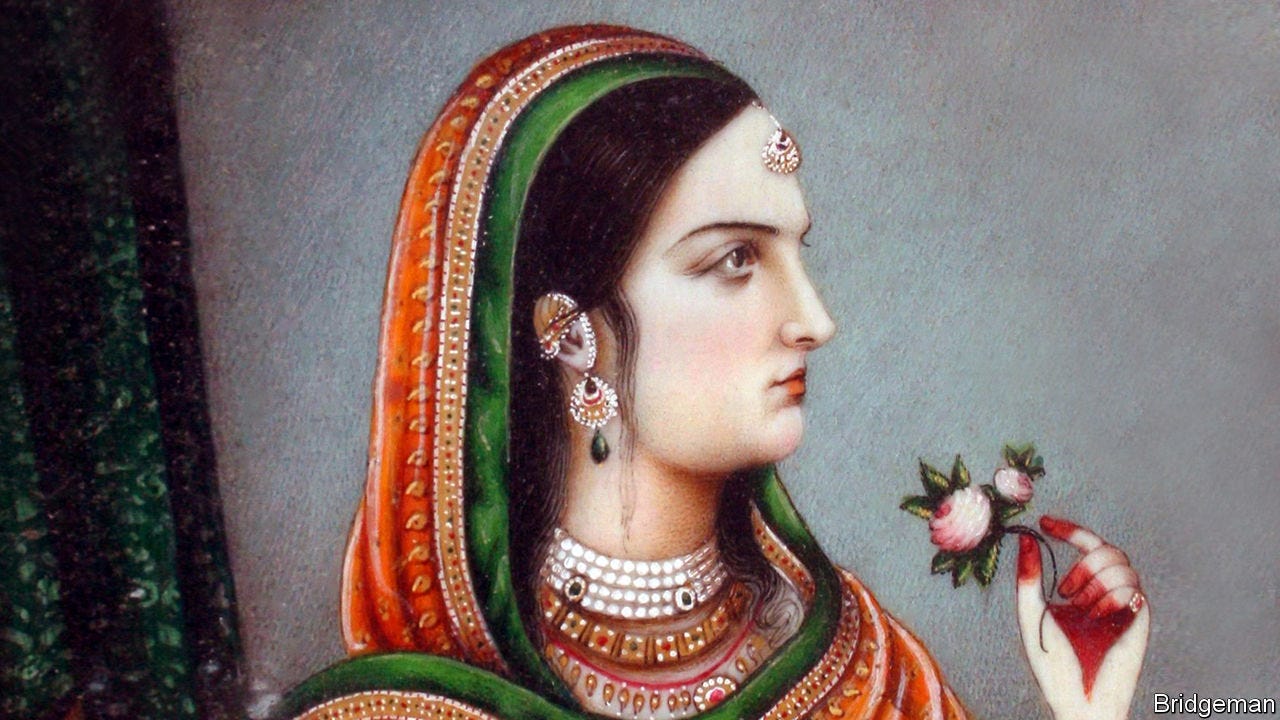The Evolution of Mughal Fashion and Textiles, right from the shiny gardens of Babur to the large palaces of Shah Jahan, there is no doubt that the Mughal Empire in India is admired for its richness, grandeur, and mix of cultures. The Mughal civilization stands out for its vivacious fashions and texts, which changed through almost the whole history of the Mughal Empire, displaying both contemporary stylizations and diverse outside influences.
Mughal Fashion and Textiles
When we talk about their magnificent building sites and cultural heritage, the Mughal fashion comes up as a beautiful list to name the kinds of clothes they wore, their accessories, and their decorative items. During the Mughal rule, it happened that fashion and textile experienced an amazing evolution from the time early 16th century to the middle of the 19th century. This article voyages through the bygone eras of the Mughal fashion history, narrating its course to the formation, impact and lastly eras of the Mughal fashion.

Mughal Era Fashion
Influences and Beginnings
The Mughal rule, specifically the initial twos, of Babur and Humayun, saw the vivification of Central Asian, Persian, and Indian styles. Babar’s Timurid DNA had always been with fine embroidery but the time spent in exile with the Safavids brought the art of rich fabric designs which were much valued.
Traditional Attire
In this era, the members of the nobility and aristocracy, most likely men, dressed in a garment called JAMA, a long tunic which is coupled with a tight-fitting pair of trousers. The naturalistic designs were still popular and the new fabrics were Brocade, silk, and fine cotton. These fabrics were further adorned with motifs inspired by nature, animals, and geometric patterns.

Middle Mughal Period
Syncretism in Fashion
Akbar’s golden years were a time when Mughal fashion could be found at sunrise, the Indian styles melting in with the Persian influences to form a rich and glorious blend. The emperors’ liberal policies, which emerged to be a platform for escalating cultural exchange, brought about the inclusion of Hindu, Persian, and Central Asian influences in fashion.
Imperial Court Dress
The Mughal court was reinterpreted as an arena where sumptuous monochrome was achieved with elaborate decorative garments, of ceremonial robes, known as jama-bandi, laden with gold thread, precious stones, and fine embroidery. Akbar’s keenness on luxurious fabrics and intricate artistry encouraged the offering of royal workshops where skillful craftspeople produced artistic pieces, ready for the elite.

Late Mughal Epoch
European Influences
In the eyes of the late 18th-century Mughal period, Europeans moved both traders and diplomats and through them the introduction of the new fabric from muslin to calico in the Indian subcontinent. The time was marked by the blending of Western outlines with traditional Mughal garments and emerged into the artful attires in a fashion that reflected the changing taste and influences.
Decline and Transformation
The last decades of the Mughal period were characterized by a change in fashion, which became much simpler and modest, compared to the intricate and luxurious fashion of the emperors. The euphoric richness of previous centuries was transformed into the understated elegance when rulers were gluing themselves together with political instability and economic trouble.
Legacy and Influence
Influence on Multicultural Trends
Even with the Mughal Imperial demise, its effect gets to feel as if it was recently on the runway as fashion designs strive to be in aesthetic identification with the old times. A curious mix of lush embroidery, voluminous silhouettes, and color palettes of traditional Indian costumes featuring often Mughal sensibilities appears on international runways time and again, confirming the everlasting interest.
Cultural Significance
Beyond the aesthetic appeal, Mughal fashion defies the conventional notion of cultural significance but serves as a symbol depicting the Indian heritage of multicultural appearance and long-standing tradition of artistic qualities. The embroidery and rich robes worn by the Mughals are expressions of an eclectic culture, where various groups rose together in support of the empire.
Conclusion
In the final analysis, the fashion and cloth creation story that revolutions the Mughal era depicts the spirit and the glory of Indian history, as every effect is added from different parts of the world, which finally results stunningly. Apart from the extravagant dresses of the royals to the beautiful artisanal works, all of which have come to symbolize the historical time of one of the most incredible and memorable civilizations of all times.
FAQs
- How different materials were being employed in Mughal-era textiles?
- The Mughal era tailoring was the development of many types of fabrics such as silk, cotton, wool, and fine muslin. These fabrics received much attention and sometimes were decorated with fancy and beautiful embroidery, gold thread, and precious stones for very elegant costumes.
- Mughal fashion is all about its influence on contemporary trends, how precisely?
- Mughal fashion has entrenched its elite character in modern fashion, from which design elements are discretely imitated from the countless shades of colors, textures, and circles that originated there. Being part of the designer in promoting cultural heritage, the Anarkali silhouette, Chikankari embroidery, and bright tones are some of the active elements that continue to define fashion at present.
- Were the female personalities hiking the fashion in the Mughal period?
- Although the history books which mostly consist of men’s clothes are the main source of the information, there certainly were female personalities who played a crucial role. Remarkably, Empresses such as Nur Jahan and Mumtaz Mahal were said to have a vital role in setting the trend and court aesthetics.
- What is the identity of Mughal clothes above all that?
- In the Mughal textile art, the symbols were ruled, and the motifs and patterns often touched on themes like fertility, prosperity, or spirituality. Such as floral symbols reflecting a harmony of nature’s abundance and line patterns demonstrating a balance of mathematical precision and symmetry.
- How did trade contribute to the growth of the Mughal way of dressing?
- Traders influence a lot the changes of styles of Mughal dress, by assembling an opportunity that makes the interchange of thoughts, materials, and techniques among different cultures to be possible. Natural silk and muslin fabrics from Central Asia, along with designs from Persia and Europe, widened the Mughal dresses, thus making them unique fusions.

